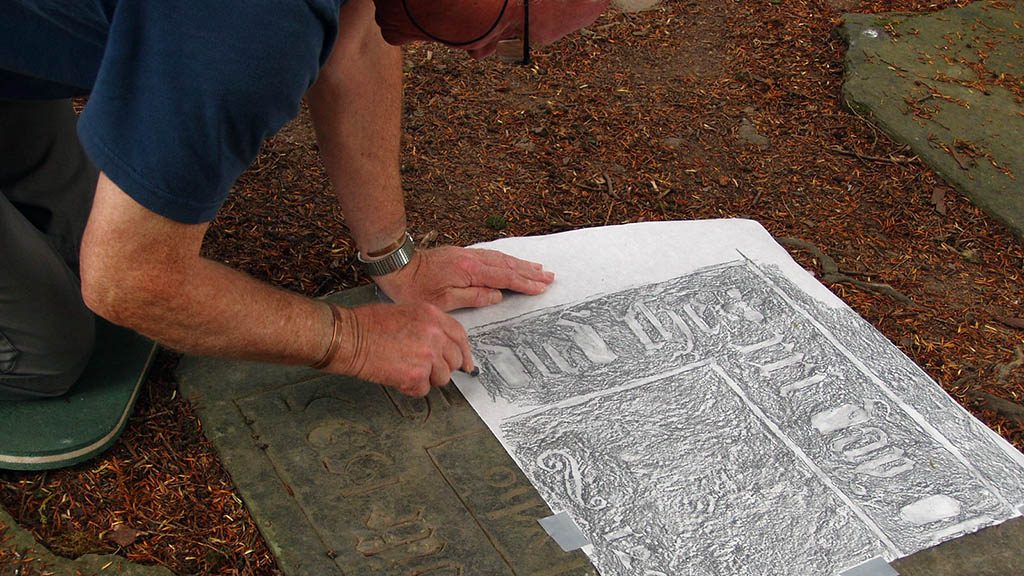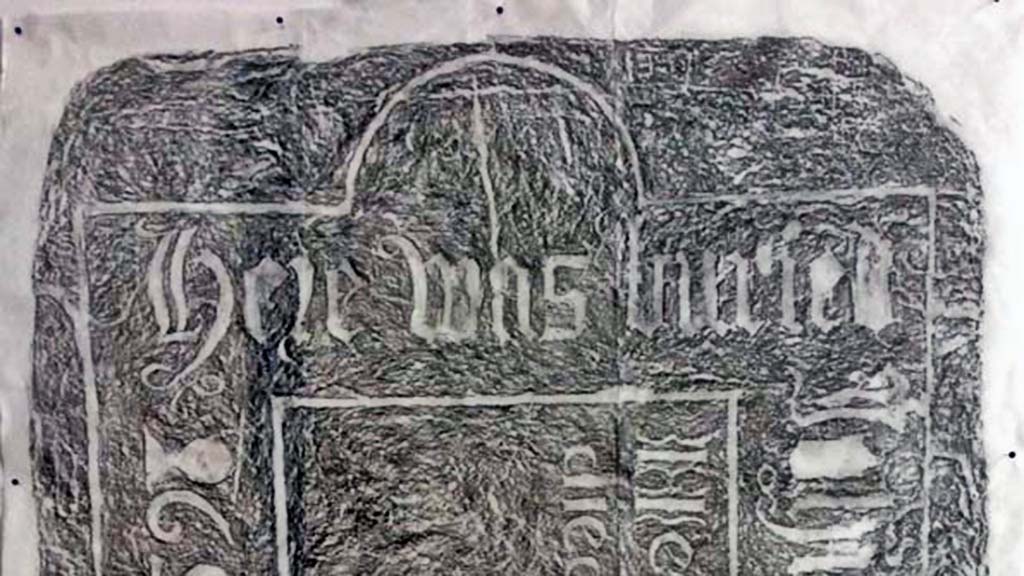Following on from our initial conversation about the project, I caught up with Martin to find out how things are progressing.
“I’ve been practising some stone rubbing – the practice of creating an image of the surface features of a stone on paper”, says Martin.

“There are a number of reasons why this practice is relevant to the project:
– It has been used by Chinese scholars to transfer calligraphy, ancient texts, from stones to paper.
– Gravestone rubbing has been used as a way of retrieving and conserving information about genealogy – a permanent record of death when a stone may be deteriorating
– It can be used to teach local history; the condition of the stone, the art and inscriptions can say things about what was going on in an area at a specific time
– In the modern era, frottage, the rubbing of uneven surfaces, became an established graphic arts practice which introduced texture and shape into art work for aesthetic purposes
“In addition to recording some of these factors, I also wanted my practice to give form and representation to the material into which the inscription is cut, to the stone which is quarried from the bedrock of the landscape.
“The weather has been good for outdoor fieldwork and this presented an auspicious opportunity to start the project with a stone drawing – and where better to begin than with the large ledger stone to the rear of the tower where the idea for the project originated?

“The stone is a large slab of blue grey shale and is inscribed with the name of three individuals; a man and his wife who both died in the 1590s and a third person, apparently unrelated, who died in 1681.
“It is not a headstone in the sense of the other stones in the churchyard but may have been a floor stone, taken from inside the old church before it was demolished in 1878.”
I’ll keep up to date with Martin’s progress and hopefully blog more on this topic in the New Year.
Sonja Hughes (previously volunteer manager at Dartington Hall

This is very interesting. I would love to hear more about what has been discoverd regarding those who have been buried here and the stones and their designs and what this tells us about the local community through time.
I have always wondered too why the church was moved. Ive heard it was because they wanted it to be nearer the village but it must have been very expensive to do, not to mention the upheaval and was it really worthwhile moving it rather than just building another? Perhaps there were other reasons for demolishing part of the old church? Ive wondered about this over time and people have suggested that maybe the old church was badly haunted, as the tower is rumoured to be, or perhaps the family living at the hall felt that having the church there compromised their privacy, but it may just have been that part of the church was no longer structurally sound.
Fascinating stuff! I do brass rubbing so that part I know butI don’t know the history of this old graveyard on my doorstep!
Fiona
Dartington Volunteer